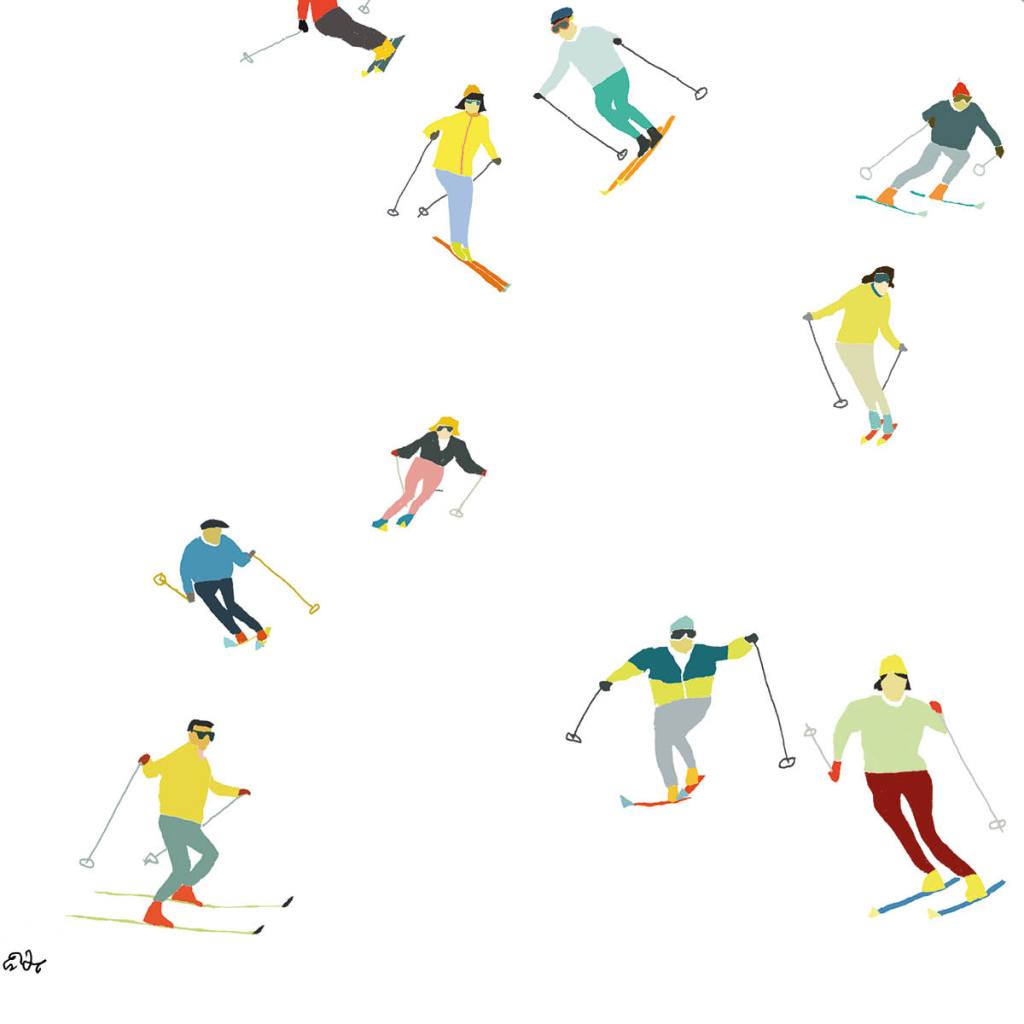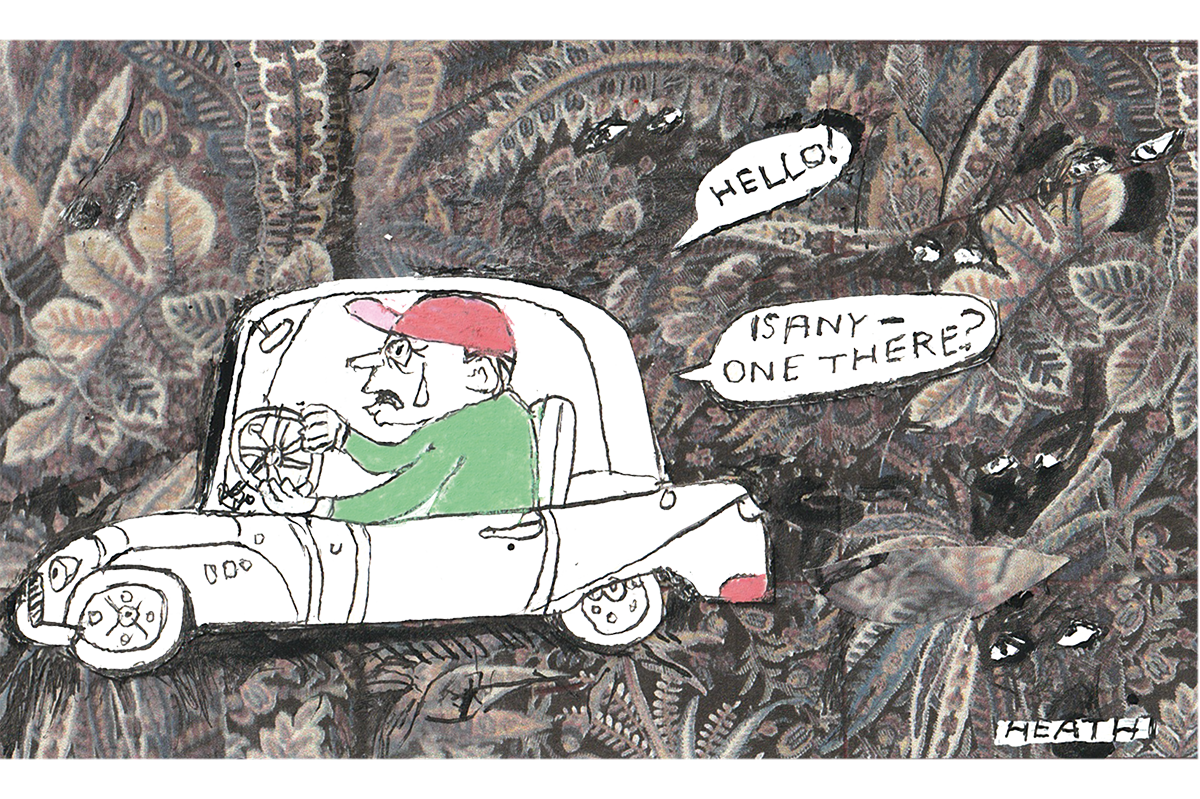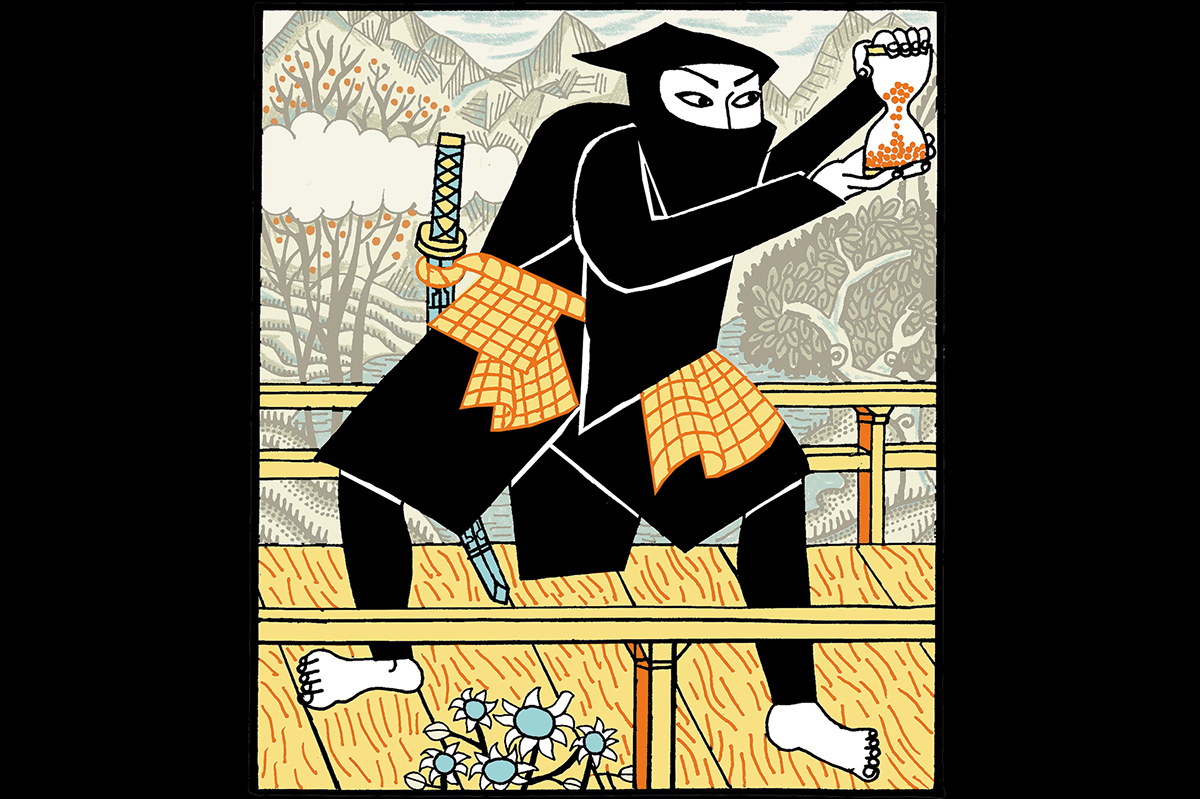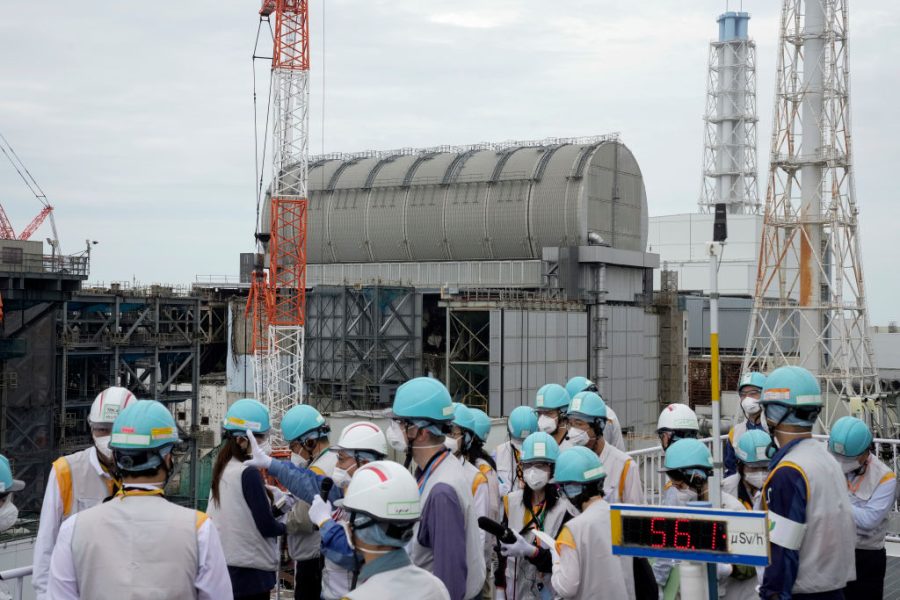When trying to imagine what it would be like to ski in Japan, I pictured a minimalist ski resort. I saw chic local skiers in monochrome outfits elegantly swishing down the slopes before stop- ping for sushi and ramen. I assumed revelers would drink whisky, sake and beer in the evenings, although perhaps not to quite the same level of excess as in Europe. Skiing in Japan seemed exotic. Did I know the Japanese ski uphill, joked one wag before I left.
To reach Niseko Village, the most famous ski resort in Japan, I had to take a fourteen-hour flight from London to Tokyo, followed by a short flight up to Sapporo, the capital city of the northern, mountainous island of Hokkaido, then a two-hour drive to Niseko. When I arrived, the snow looked thick, even in early March. The skies were blue.
All the hotels in Niseko village have views of Mount Yotei, an active volcano reminiscent of Mount Fuji. Jetlagged, I lay on my bed staring out at the mountain, trying not to fall asleep before I went to have my boots and skis fitted.
Niseko village is one of the resorts at the foot of Niseko mountain, in an area famed, I was told, for its powder snow. It’s the sort of spiel you hear and don’t quite believe. But on the evening I arrived, the slopes were dusted with yet more snow. I awoke to a bluebird day, but in comparison to what one might expect to see in European resorts, there were far fewer people hoping to ski on the fresh powder. Skiing in Japan just felt far more relaxed, more — dare I say it — zen. It was, I imagine, how skiing must have felt thirty or forty years ago in France.
Everything in Niseko village worked meticulously, from the ski valet service available at all the hotels, to the ski-in ski-out service that meant there was no need to lug everything up and down to the slopes each day.
The resort, with its peppermint-green ski lifts with muted red chairs and off-white bubbles, looks as pristine as if it had been designed in harmonious collaboration between Muji and Wes Anderson. Friendly Japanese men and women dusted snow off the lifts using the kind of handmade wooden brushes sold in overpriced trinketerias in Stoke Newington or the Hamptons. In the canteens up the mountain, hot chocolate was served in brown earthenware cups (also very Stoke Newington).
Some of the lifts certainly took the minimalist brief seriously: Wonderland, a steep, single-person lift which reaches the very top of the mountain and some of the more challenging slopes, had no safety barrier and only a single pole to cling to. In windy weather, it quickly closes. Fortunately, it only closed once during my visit.
The mountain has four substantial areas for skiing and snowboarding (Niseko village is at the base of one). It was notable how many snowboarders there were; at times it felt as though there were more snowboarders than skiers out for the day. But skiers of all abilities are catered to: there are gentle slopes for beginners (Annupuri felt pleasingly placid) and plenty of black slopes and offpiste skiing for more courageous types. I was right about the outfits: aside from the occasional colorful look, most people opted for a muted ensemble. I was relieved I’d packed all-black.
As I had also expected, lunch was indeed mainly ramen or sushi, although at the big hotels, you’ll find all the usual international fare. Niseko Yo is a new development at the center of Niseko village. Skiers can come straight off the mountain to find a restaurant for a bowl of spicy udon ramen, Roman-style pizza or a platter of sushi. Given that much of Japan’s fish comes from this region, what’s on offer is wonderfully fresh. It made a nice change from hot cheese and stodgy hunks of bread at every meal. There aren’t many bars and restaurants at the top of the mountain, so most people head back down to have lunch, either in the hotels (the Hilton is a popular spot) or at Niseko-Yo.
The evening meals were exceptional. It goes without saying that the food is good in Japan but it still felt surprising to have so many terrific meals in a ski resort. Boats of sushi would arrive, followed by delicate slices of wagyu beef and local mushrooms to drop into a hotpot of broth. Tiramisù seems to be a popular dessert in Japan; I had three during my stay. At the Ritz Carlton, guests can book a private “omakase” sushi experience, with everything prepared in front of you. Our chef had been in training since the age of fifteen and was mesmerizing to watch.
I know what you’re thinking — it can’t all be “wonderful” and “beautiful.” Perhaps the one downside for those accustomed to après-ski culture is the lack of it in Japan. Despite the best efforts from the Australians who tend to gravitate around Hirafu, one of the mountain’s other resorts, it’s just not part of the culture. In Niseko village, a new bar/ restaurant/club called Mandala has recently opened, just around the corner from Hinode Hills, one of the midrange hotels. The food is good, but don’t come expecting a Folie Douce-style experience. It all felt quite subdued.
But if anything, Japan’s version of an après-ski experience is more enjoyable, given the local habit of bathing naked in an “onsen” — a hot spring — normally toward the end of the day. It is the ideal way to wind down after a day’s skiing and certainly felt more my level these days. All the hotels are designed around their onsens. My ski guide Rasmus, a hirsute Danish man whose next stop in Japan when the season ended was a “penis festival in Tokyo,” even reported that there was an onsen at the accommodation for the resort’s instructors. At the Green Leaf hotel and Higashiyama, Ritz Carlton’s reserve hotel, the onsens are outdoors. The snow drifts down onto you as you sit in a bubbling spring. Afterwards, whisky and sake await.
I was reluctant to leave. The skiing was magnificent, it really was, and I can’t recommend it more highly. The flight is long but worth it; jet lag quickly dissipates after a day in bright, snowy light. The whole experience was exotic but strangely familiar. Après skiing in Japan, nothing else will really compare.
Rates at Higashiyama Niseko Village, a Ritz Carlton Reserve, start from approximately $650 (depending on the exchange rate at time of booking) per night during the winter season, for the room only. For more information, visit www.ritzcarlton.com/higashiyamanisekovillage. Rates for a one-bedroom at Hinode Hills start at about the same. For more information visit https://www.hinodehills.com/. This article was originally published in The Spectator’s May 2024 World edition.























Leave a Reply